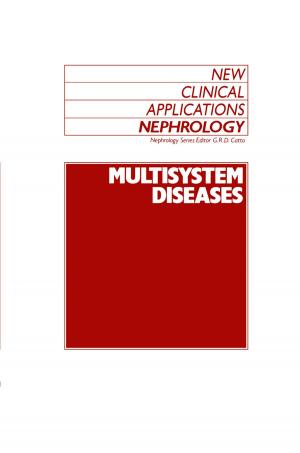Tools and Modes of Representation in the Laboratory Sciences
Nonfiction, Religion & Spirituality, Philosophy, Epistemology, Computers, Database Management, Data Processing| Author: | ISBN: | 9789401597371 | |
| Publisher: | Springer Netherlands | Publication: | April 17, 2013 |
| Imprint: | Springer | Language: | English |
| Author: | |
| ISBN: | 9789401597371 |
| Publisher: | Springer Netherlands |
| Publication: | April 17, 2013 |
| Imprint: | Springer |
| Language: | English |
constitutive of reference in laboratory sciences as cultural sign systems and their manipulation and superposition, collectively shared classifications and associated conceptual frameworks,· and various fonns of collective action and social institutions. This raises the question of how much modes of representation, and specific types of sign systems mobilized to construct them, contribute to reference. Semioticians have argued that sign systems are not merely passive media for expressing preconceived ideas but actively contribute to meaning. Sign systems are culturally loaded with meaning stemming from previous practical applications and social traditions of applications. In new local contexts of application they not only transfer stabilized meaning but also can be used as active resources to add new significance and modify previous meaning. This view is supported by several analyses presented in this volume. Sign systems can be implemented like tools that are manipulated and superposed with other types of signs to forge new representations. The mode of representation, made possible by applying and manipulating specific types of representational tools, such as diagrammatic rather than mathematical representations, or Berzelian fonnulas rather than verbal language, contributes to meaning and forges fine-grained differentiations between scientists' concepts. Taken together, the essays contained in this volume give us a multifaceted picture of the broad variety of modes of representation in nineteenth-century and twentieth-century laboratory sciences, of the way scientists juxtaposed and integrated various representations, and of their pragmatic use as tools in scientific and industrial practice.
constitutive of reference in laboratory sciences as cultural sign systems and their manipulation and superposition, collectively shared classifications and associated conceptual frameworks,· and various fonns of collective action and social institutions. This raises the question of how much modes of representation, and specific types of sign systems mobilized to construct them, contribute to reference. Semioticians have argued that sign systems are not merely passive media for expressing preconceived ideas but actively contribute to meaning. Sign systems are culturally loaded with meaning stemming from previous practical applications and social traditions of applications. In new local contexts of application they not only transfer stabilized meaning but also can be used as active resources to add new significance and modify previous meaning. This view is supported by several analyses presented in this volume. Sign systems can be implemented like tools that are manipulated and superposed with other types of signs to forge new representations. The mode of representation, made possible by applying and manipulating specific types of representational tools, such as diagrammatic rather than mathematical representations, or Berzelian fonnulas rather than verbal language, contributes to meaning and forges fine-grained differentiations between scientists' concepts. Taken together, the essays contained in this volume give us a multifaceted picture of the broad variety of modes of representation in nineteenth-century and twentieth-century laboratory sciences, of the way scientists juxtaposed and integrated various representations, and of their pragmatic use as tools in scientific and industrial practice.















